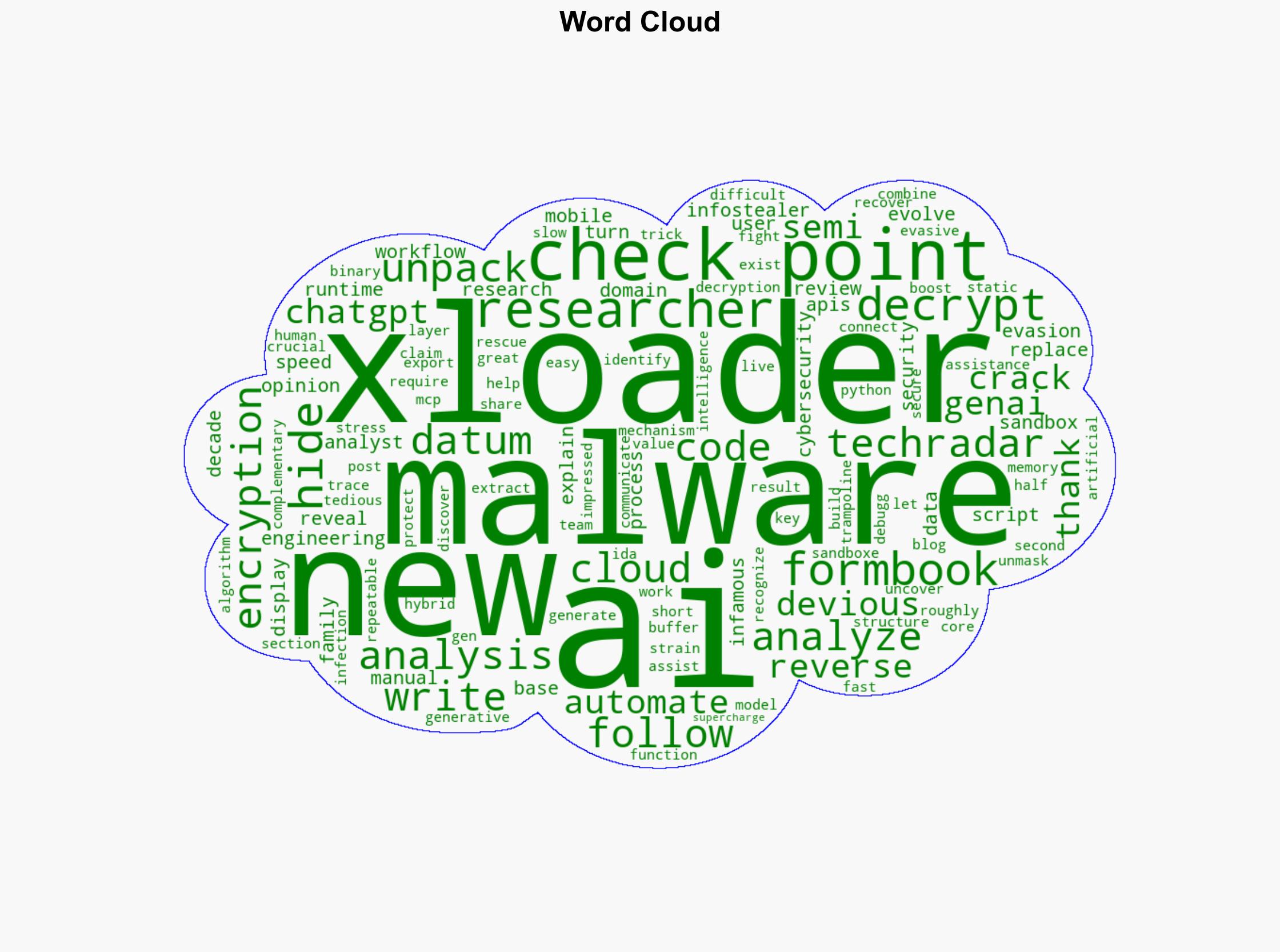One of the most devious malware strains might have been cracked – and it’s all thanks to Gen AI – TechRadar
Published on: 2025-11-04
Intelligence Report: One of the most devious malware strains might have been cracked – and it’s all thanks to Gen AI – TechRadar
1. BLUF (Bottom Line Up Front)
The integration of generative AI, such as ChatGPT, into cybersecurity workflows has significantly enhanced the ability to analyze and mitigate threats from sophisticated malware like XLoader. The most supported hypothesis is that AI will continue to augment human analysts, improving speed and accuracy in malware decryption and analysis. Confidence Level: High. Recommended action includes further investment in AI tools for cybersecurity and training analysts to leverage these technologies effectively.
2. Competing Hypotheses
Hypothesis 1: Generative AI has fundamentally transformed malware analysis, enabling faster and more accurate decryption of complex malware like XLoader, thereby enhancing cybersecurity defenses.
Hypothesis 2: While AI tools provide some benefits, the core capabilities of malware analysis remain dependent on human expertise, with AI serving primarily as a supplementary tool rather than a transformative force.
Using the Analysis of Competing Hypotheses (ACH) 2.0, Hypothesis 1 is better supported due to the reported success in semi-automating the reverse engineering process and the ability to uncover hidden APIs and domains, which suggests a significant enhancement in capability.
3. Key Assumptions and Red Flags
Assumptions: The effectiveness of AI in malware analysis assumes continuous improvement in AI models and seamless integration with existing cybersecurity frameworks.
Red Flags: Over-reliance on AI could lead to complacency in human analysts, and there is a risk of AI models being targeted by adversaries to introduce biases or errors.
4. Implications and Strategic Risks
The successful integration of AI in malware analysis could lead to a paradigm shift in cybersecurity, reducing the time and resources needed to counteract threats. However, adversaries may also adopt AI to enhance their malware capabilities, leading to an arms race in cyber capabilities. This could escalate into broader geopolitical tensions as nations seek to protect their cyber infrastructure.
5. Recommendations and Outlook
- Invest in AI-driven cybersecurity tools and ensure continuous training for analysts to maximize the benefits of these technologies.
- Develop contingency plans to address potential AI vulnerabilities and adversarial attacks on AI models.
- Scenario Projections:
- Best Case: AI integration leads to a significant reduction in successful cyberattacks, enhancing global cybersecurity.
- Worst Case: Adversaries exploit AI vulnerabilities, leading to more sophisticated and damaging cyberattacks.
- Most Likely: AI continues to augment human capabilities, with gradual improvements in cybersecurity defenses.
6. Key Individuals and Entities
Check Point Research, TechRadar, XLoader, Formbook, ChatGPT.
7. Thematic Tags
national security threats, cybersecurity, counter-terrorism, regional focus





